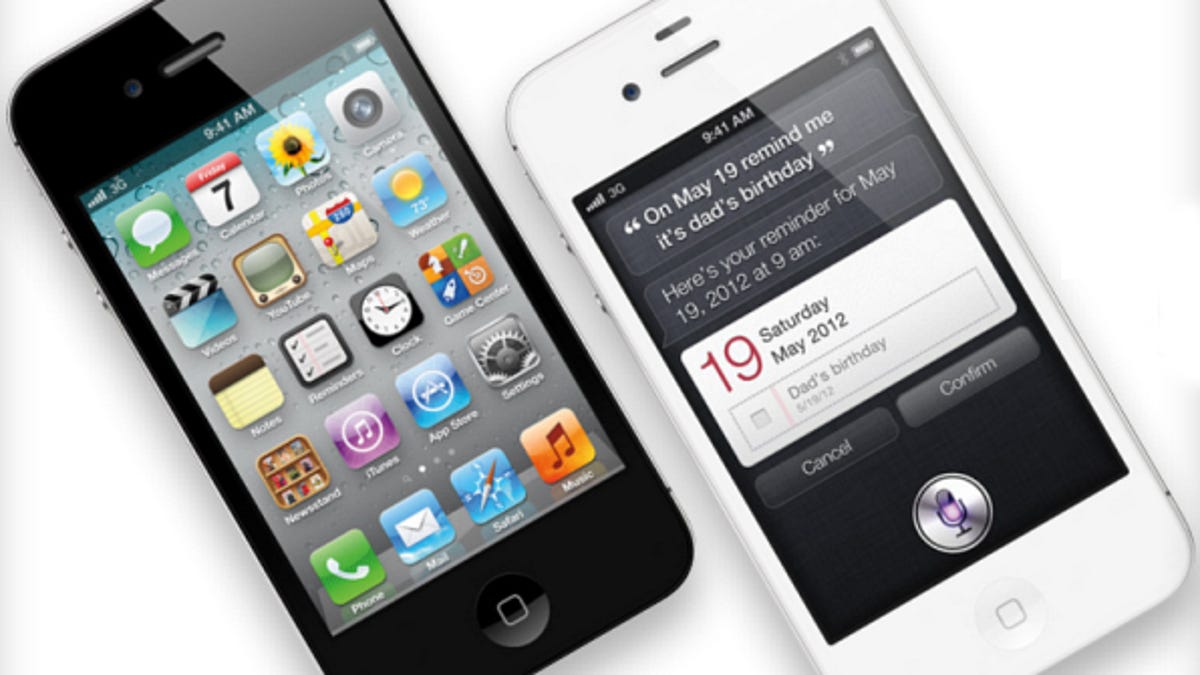iPhone 4S helps Apple inch past Android in the U.S.
With unit sales of 37 million, the new iPhone gave Apple a 44.9 percent share of the U.S. smartphone market last quarter, just slightly beating Android's 44.8 percent.

Apple gained a slight edge over Android in the U.S. smartphone market last quarter, courtesy of the 37 million iPhones sold.
Eyeing the U.S. smartphone market for the December quarter, research firm Kantar Worldpanel ComTech pegged Apple's share at 44.9 percent, double the percentage from a year ago. That narrowly beat Android's market share, which fell to 44.8 percent from 50 percent.
Across the world, Android still retained its smartphone lead, but Apple's iPhone is growing at a faster rate over its rival, according to Kantar. In the U.K., for example, Apple's share of the smartphone market jumped to 34 percent last quarter from 22 percent a year ago.
"Apple has continued its strong sales run in the U.S., U.K., and Australia over the Christmas period," Dominic Sunnebo, Kantar's global consumer insight director, said in a statement. "Overall, Apple sales are now growing at a faster rate than Android across the nine countries we cover."
Yesterday Apple reported a surge in its financial performance for the December quarter, raking in $46.33 billion in sales and $13.06 billion in profits. The 37 million iPhones sold surpassed analysts' estimates of only 30 million, thanks to strong demand for the iPhone 4S.
Still, Apple continues to face competition from Android in certain key and growing global markets, noted Kantar. Google's mobile OS is making a healthy dent in Latin America where it earned a 28 percent share in Brazil and 20 percent in Mexico last quarter.
"Brazil and Mexico have a combined population of over 300 million, meaning that the mobile opportunity is huge," Sunnebo said. "By staking an early claim on the smartphone market in these countries, Android is laying important groundwork for future sales from the increasingly affluent middle classes."
Looking at other platforms, Microsoft's Windows Phone is still struggling, unable to win more than a 2 percent share in any country despite the buzz about the new Nokia Lumia handsets.
Nokia today reported its third consecutive quarter of heavy losses as the company strives to make the jump to Windows Phone in the face of weak Symbian sales. CEO Stephen Elop said that Nokia has sold more than 1 million Lumia phones since their debut in October. But it's unclear whether he was referring to direct sales to customers or shipments to retailers and mobile carriers.
Of course, the Lumia lineup is just now starting to get off the ground throughout the world.
The entry-level Lumia 710 just recently went on sale in the U.S. with carrier T-Mobile for $49.99, though Wal-Mart is offering the phone for free with a two-year contract. Available in Europe since November, the Lumia 800 is headed toward the U.S. as an unlocked model in the next few months. But Nokia is looking to make a major dent with its high-end Lumia 900. Slated to be carried by AT&T this quarter, the 900 will be Nokia's first LTE Windows Phone.
Nokia is also looking to reach more markets, including China and Latin America, during the first half of the year.
RIM has been facing a competitive climate as well, but the BlackBerry proved popular during the holidays, Kantor noted.
"BlackBerry remains the brand of choice in the smartphone gifting market; 57 percent of BlackBerrys were purchased as gifts in quarter four," Sunnebo said. "This rose to 76 percent during December and a whopping 55 percent of recipients were under 16, indicating BlackBerry's hold on the U.K. youth market."
Kantor's smartphone data is based on global research that tracks mobile-phone behavior, purchases, bills, usage, and other key metrics compiled from mobile users.

